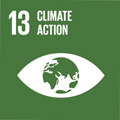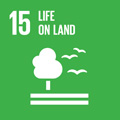- Docente: Stefano Claudio Vaiani
- Credits: 6
- SSD: GEO/01
- Language: Italian
- Teaching Mode: In-person learning (entirely or partially)
- Campus: Bologna
-
Corso:
Second cycle degree programme (LM) in
Geology for Sustainable Development (cod. 6050)
Also valid for Second cycle degree programme (LM) in Geology and Territory (cod. 9073)
-
from Sep 30, 2024 to Dec 19, 2024
Learning outcomes
This course provides the basis to understand 1) the distribution of microfossils at a geologic time scale; 2) the biostratigraphic, paleoclimatic and paleoenvironmental applications of Micropaleontology; 3) the evolutionary trends of selected microfossils useful for dating sedimentary successions; 4) the suitable group of fossils for biostratigraphic studies in relation with the Chronostratigraphy and the paleoenvironment of a sedimentary succession. With laboratory work, the students will be able to provide a foraminiferal biostratigraphy of Neogene and Quaternary successions (and with low resolution within Cretaceous and Paleogene units), with details on paleoclimate and paleoenvironment.
Course contents
Microfossils in stratigraphic analysis and biostratigraphic methods. Sampling and laboratory methods for biostratigraphic studies. Biostratigraphic resolution, integrated biostratigraphy, quantitative biostratigraphy and cyclostratigraphy. Neogene and Quaternary foraminiferal biostratigraphy. Overview on Cretaceous and Paleogene biostratigraphy. Biostratigraphy in geological mapping and relationships with other stratigraphic units. Latitudinal range of planktonic foraminifera species. Paleoclimatic reconstruction of a sedimentary succession and relationships with oxygen isotope stratigraphy. Micropaleontologic proxies for paleoclimate, sea-level change and paleoenvironment with details on Quaternary sedimentary successions.
Readings/Bibliography
Pdf files and printed plates provided by the teacher.
Kennett, J.P., & Srinivasan, M.S., 1983, Neogene planktonic foraminifera: a phylogenetic atlas. Hutchinson Ross Publishing Company, Stroudsburg, Pennsylvania.
Murray, J.W., 2006. Ecology and Applications of Benthic Foraminifera. Cambridge University Press, Cambridge.
Teaching methods
Theory lessons, microscope laboratory
Assessment methods
The final test includes both laboratory and theory examinations.
The laboratory test consists in the micropaleontological analysis of two foraminiferal assemblages. The first one is dedicated to the planktonic foraminifera from a sample collected in a sedimentary succession, in order to recognize biostratigraphic markers, biostratigraphic zone and evaluate paleoclimatic conditions. The second one is dedicated to the benthic foraminifera collected in a Quaternary succession, in order to define the depositional paleoenvironment.
The theory examination consists in an oral test in order to evaluate the learning of the main topics explained during the lessons.Teaching tools
Power Point presentations and microscopes
Office hours
See the website of Stefano Claudio Vaiani
SDGs


This teaching activity contributes to the achievement of the Sustainable Development Goals of the UN 2030 Agenda.
